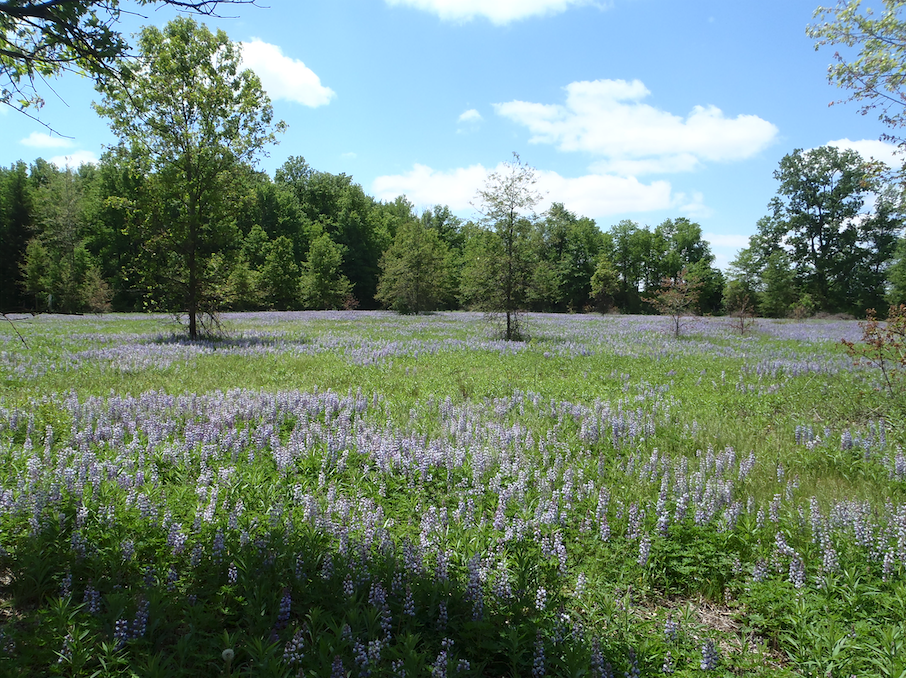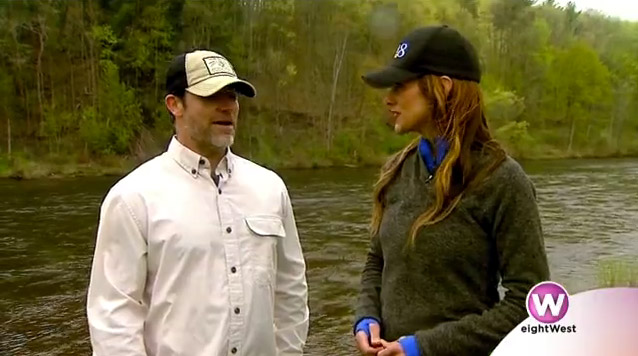From a tiny warbler to a giant fish, 6 comebacks on display at Michigan History Center.
Considering all the effort that went into ensuring the survival of what are now some of Michigan’s most high-profile animal species, it’s only fitting that a new wildlife exhibit at the Michigan History Center in Lansing was crafted with assistance from more than 10,000 people throughout the state.
The Michigan Wildlife Photo Mosaics exhibit that debuted in January and will remain on display indefinitely at the center celebrates six of Michigan’s greatest conservation success stories.
“This exhibit is really a tribute to everyone who joined forces to bring six of Michigan’s most treasured wildlife back from the brink of extinction: elk, lake sturgeon, peregrine falcon, wild turkey, Kirtland’s warbler and osprey,” Michigan Department of Natural Resources Director Dan Eichinger said during an unveiling ceremony for the mosaics.
The mosaics were developed at high-profile events during 2019 in Detroit, Flint, East Lansing, Grand Rapids and Escanaba. At each stop, participants had their pictures taken and then affixed stickers of their photos to an 8-foot-wide by 4-foot-tall mosaic board that, when filled, formed the image of one of the featured species.

The intent was to illustrate how people are necessary for wildlife management, said Matt Pedigo, chairman of the Michigan Wildlife Council, an organization created by the Michigan Legislature to educate the public about the importance of scientific-based management practices — including regulated hunting and fishing — to the conservation of the state’s wildlife.
“This one-of-a-kind series of photo mosaics is a fun and dynamic way to acknowledge all the thought and work that nature lovers of all types put into preserving our outdoor heritage,” said Pedigo, noting the bulk of that conservation work is funded by hunting and fishing license sales — not general state taxes.

The Michigan Wildlife Council, which itself is funded by $1 from the sale of each hunting and fishing license, has been highlighting the role that sportsmen and sportswomen play in wildlife conservation since it was formed in 2013.
And it’s clear that message is resonating with Michiganders, 73% of whom in a 2019 Michigan Wildlife Council survey correctly identified hunting and fishing licenses as the largest sources of funding for statewide wildlife management work.
Nurturing nature
The Michigan Wildlife Photo Mosaics exhibit is a celebration of some high-profile examples of that work:
- Osprey numbers had plummeted in the 1940s and ’50s throughout Michigan due to habitat loss, poaching and the toxic effect of insecticides. Since then, the ban of DDT and the implementation of release and restoration programs have helped boost their numbers. For example, in 2002 only one active osprey nesting site was found in southern Michigan, but today there are more than 75.
- Elk, which were once widespread throughout Michigan, had disappeared from the state’s landscape by the late 1800s. In 1918, conservationists reintroduced seven Rocky Mountain elk to northern Michigan. Thanks to extensive public and private wildlife and forestry management efforts, Michigan now has an estimated 1,200 elk residing in Pigeon River Country State Forest and the surrounding area, near Gaylord.
- The Kirtland’s warbler came close to extinction in the 1960s. In fact, it was an entrant on the first federal endangered species list released in the early 1970s. Thanks to successful conservation and forest management practices that created and preserved the warbler’s preferred nesting habitat of young jack pine forests, the population has grown from fewer than 200 nesting pairs to more than 2,000 throughout northern Michigan, Wisconsin and Ontario — and the species is no longer categorized as endangered.
- By the early 1900s, the wild turkey population in North America had plummeted, with almost none left in Michigan. Habitat destruction and unregulated hunting were primarily responsible for the decline. But strategic relocation efforts and extensive habitat management allowed the state’s wild turkey population to bounce back, growing from 2,000 in 1960 to more than 200,000 today.
- In the 1960s, the peregrine falcon had disappeared from Michigan due to widespread DDT use. Thanks to pesticides regulation and the reintroduction of peregrines to their historic habitats and cities such as Detroit and Grand Rapids, Michigan’s falcon numbers began to increase. Now found in several Michigan cities, they were removed from the federal endangered species list in 1999.
- Lake sturgeon, which can grow up to 7 feet long and live for more than 100 years, are sometimes called dinosaur fish because they’ve been a part of Michigan’s waters for millions of years. But dams, habitat loss and unregulated harvest have landed them on the state’s threatened species list. Thanks to dedicated conservation practices — including the construction of man-made spawning reefs, dam removal, migration tracking and spawning monitoring — lake sturgeon numbers are on the rise today.



